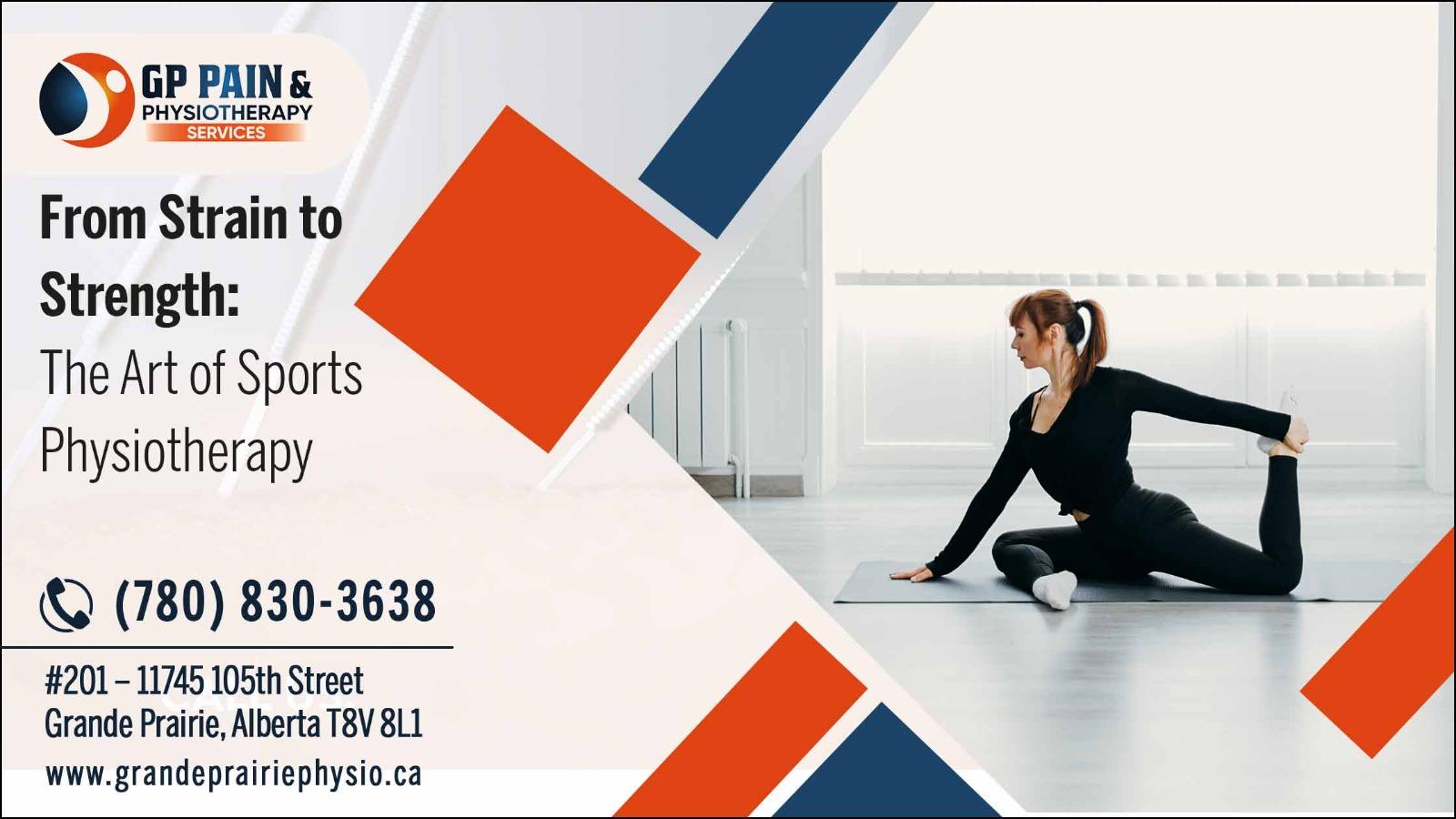In the dynamic world of sports, injuries are a common hurdle for athletes at all levels. Sports physiotherapy, particularly in Grande Prairie, plays a critical role in transforming these challenges into opportunities for growth and resilience. At GP Pain Physiotherapy, a dedicated approach to sports physiotherapy in Grande Prairie, helps athletes not only recover from injuries but also enhance their overall athletic performance.
Scope of Sports Physiotherapy
Sports physiotherapy is a specialized field focusing on the treatment, prevention, and management of injuries related to sports and physical activity. It goes beyond mere rehabilitation; it's about optimizing performance, increasing strength and flexibility, and preventing future injuries. At its core, sports physiotherapy in Grande Prairie is tailored to meet the demands and goals of each athlete.
The Spectrum of Sports Physiotherapy: What Does It Encompass?
Injury Assessment
The assessment process often includes a combination of physical examinations, movement analyses, and sometimes imaging studies to get a comprehensive view of the injury. Sports physiotherapists use their expertise to differentiate between various types of sports injuries, whether they’re muscle strains, ligament tears, or joint issues. This step is important in tailoring the treatment plan to the specific injury and the athlete's sport. Understanding the mechanism of injury is also important for planning effective rehabilitation strategies. The thoroughness of this initial assessment sets the stage for a successful recovery journey.
Personalized Rehabilitation Programs
Rehabilitation programs are designed to address the needs of each injury and athlete. These programs focus on restoring strength, flexibility, and function using a combination of exercises, manual therapy, and cutting-edge modalities.
These programs are not just about healing from an injury but also about regaining and enhancing sports-specific skills. Rehabilitation includes a gradual progression from basic exercises to more complex, sport-specific movements. The focus is on both healing the injured area and ensuring that the rest of the body remains in peak condition. Techniques like proprioceptive training and functional exercises are integrated into these programs. The aim is to return the athlete to their pre-injury level of performance or even better.
Performance Enhancement
Performance enhancement in sports physiotherapy involves a holistic approach, looking at the athlete’s entire physical profile. This process entails a thorough evaluation of an athlete's technique, physical strength, and conditioning to pinpoint potential areas for enhancement. Depending on the athlete's particular sport, the approach might involve specialized strength and conditioning routines, agility drills, and exercises to boost speed.
The physiotherapist works in tandem with coaches and trainers to seamlessly incorporate these adjustments into the athlete's comprehensive training regimen. Additionally, exercises aimed at increasing flexibility and mobility are integral, serving to both elevate athletic performance and diminish the likelihood of subsequent injuries. This proactive approach to enhancing performance can give athletes a competitive edge.
Injury Prevention Strategies
An essential component of sports physiotherapy is injury prevention. This includes education on proper techniques, strength and conditioning programs, and advice on how to avoid overuse injuries, ensuring athletes can enjoy a sustainable sports career.
It also involves educating athletes on the importance of proper warm-up and cool-down routines. Physiotherapists analyze an athlete’s technique to identify and correct movement patterns that may predispose them to injuries. The development of personalized strength and conditioning programs also plays a significant role in reducing injury risk.
Regular screening for potential vulnerabilities and advice on recovery strategies, including adequate rest and nutrition, are also provided. By focusing on prevention, physiotherapy helps athletes maintain consistent training and competition schedules.
Pain Management Techniques
Pain management is tailored to each athlete's tolerance and the nature of their injury. Techniques like manual therapy, including massage and joint mobilization, can be particularly effective in alleviating pain and improving joint function. Dry needling and acupuncture are also used as part of pain management strategies for certain conditions.
Sports physiotherapists often teach athletes self-management techniques, such as the use of foam rollers and trigger point balls. The goal is to manage pain in a way that allows for continued training and competition whenever safe and feasible.
Education and Lifestyle Advice
Athletes receive guidance on nutrition, hydration, and sleep, all of which are crucial for optimal sports performance and injury recovery. The physiotherapist also advises on training load management to avoid overtraining and fatigue-related injuries. Athletes learn about the signs of injury and when to seek further treatment, fostering a sense of responsibility for their health.
Lifestyle modifications, including stress management and balancing training with rest periods, are also part of the education. This holistic approach ensures the athlete’s well-being is considered in all aspects of their training and recovery.
Post-Surgical Rehabilitation
For athletes who undergo surgery, sports physiotherapy plays a crucial role in their recovery journey. Post-surgical rehabilitation focuses on regaining full function and returning to the sport safely and effectively.
The physiotherapist works closely with the surgical team to understand the specific surgical procedures and recovery protocols. Early-stage rehabilitation often focuses on reducing swelling and pain and gradually progresses to restoring range of motion and strength. The latter stages of rehabilitation incorporate sport-specific exercises and drills to help prepare the athlete for return to play. The physiotherapist’s role is to bridge the gap between surgery and full sports participation, ensuring the athlete is both physically and mentally prepared to return to competition.
Crossing the Finish Line With Sports Physiotherapy
Sports physiotherapy is an art that blends science with a deep understanding of athletic performance. In Grande Prairie, GP Pain Physiotherapy exemplifies this blend, providing athletes with the tools and support they need to transition from strain to strength. Whether recovering from an injury or striving to attain peak performance, sports physiotherapy in Grande Prairie is a vital ally in every athlete's journey.
Also read about:
On the Job Wellness Work Injury Physiotherapy Essentials
Navigating Motor Vehicle Accident Physiotherapy Trends Tips and Essential Information
Best Furniture Shop in UAE

